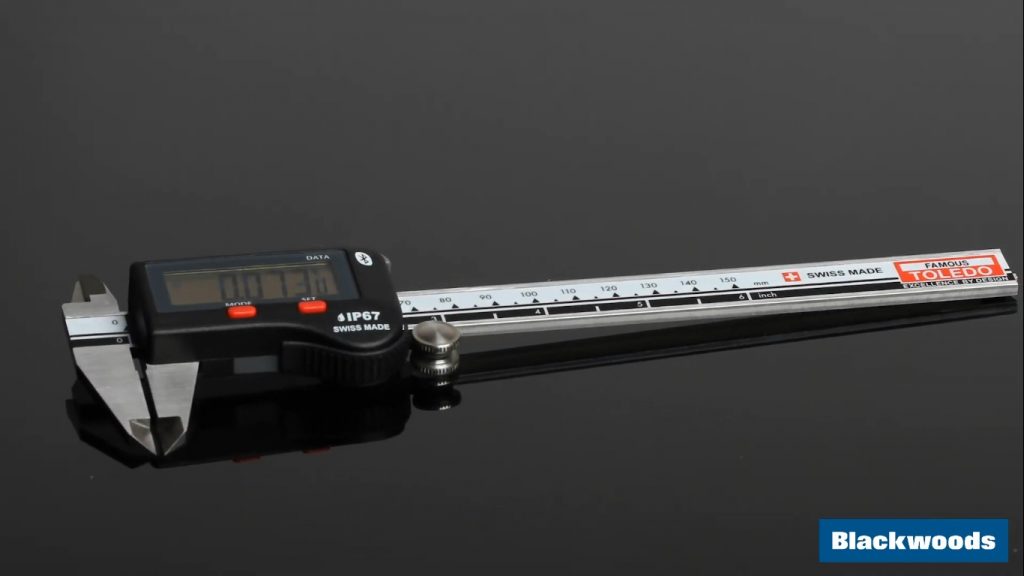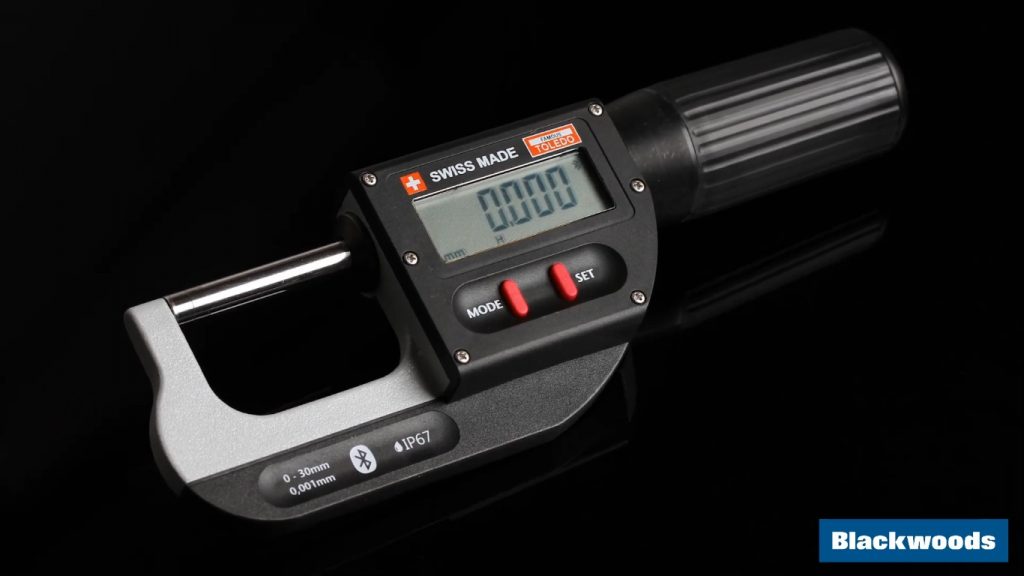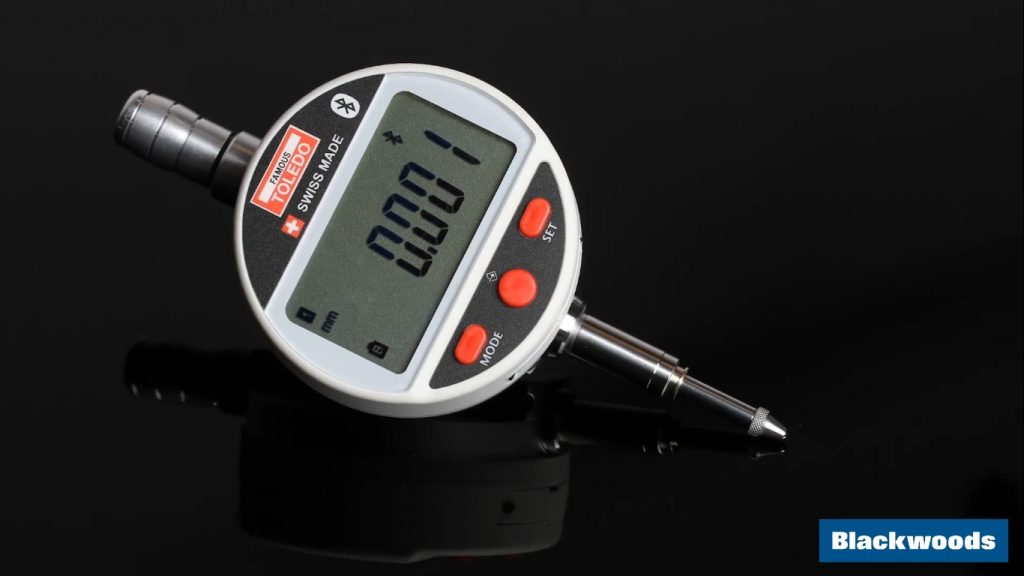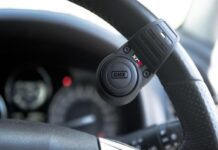This series is presented by Blackwoods.
The previous feature in this series explained the basics of Bluetooth® Technology and how they could be applied for measurement taking and instrumentation. This part will focus on the measurement of lengths and physical dimensions to the precise micrometer level of precision. If you would like to book a free demo of this new innovative technology to boost productivity in your workplace then visit Blackwoods today.
Measuring Lengths and Dimensions in Industry
One of the most critical, yet overlooked, measurement considerations in modern industry is that of length and dimensions in the micrometer scale. Nonetheless, it does carry practical implications for a business. Producing good measurements is important in industry as it has an impact on the value and quality of the end product and a 10–15% impact on production costs 1. Here are some major industrial applications which commonly require precise length and angle measurements.
- Manufacturing
Length and angle measurements are critical in manufacturing particularly from a control standpoint. Production line staff are often required to measure dimensions of products manufactured to ascertain if they fall within required tolerances. The same holds true for Quality Control officers within the manufacturing fraternity. Tooling is often also integrated with manufacturing operations and the requirements for precision and accuracy means that tooling also requires length measurements. - Industry
The use of heavy machinery and mechanical moving parts in industries such as Agriculture, Mining, Oil and Gas, Automotive, Pharmaceuticals, Medical, and Aerospace means that dimension measurements are essential and complementary to their normal operations. In particular, these industries require precise measurements to conduct effective operations. For example, the automotive industry requires the measurement of disc thickness for brake rotor at a micrometer scale of precision. - Learning and R & D
Research & Laboratory applications also require measurements of dimensions not readily ascertainable with the naked eye. Given R & D applications in testing and development, precise prototypes are necessary. Having sophisticated measuring instruments such as calipers, micrometers and dial gauges ensures the utmost precision at very small scales. The need to familiarise with the use of these equipment also means that Schools & Educational institutions will heavily use these metrological instruments.
Considerations for Measuring Lengths and Dimensions in Industry
- Human Error
Human errors and measurement uncertainty have been issues with dimension measurements for as long as the need for measurement has existed. Random errors are inherently unpredictable fluctuations in the readings of a measurement apparatus or in the measurer’s interpretation of the instrumental reading. Standardizing measurement protocols and removing the need for the measurer’s interpretation is therefore critical for accurate readings. - Data Recording
An essential part of measurent taking is the need to record data down for reference. In modern industrial practice, the recording medium is often digital. Spreadsheets are the most useful for this purpose as they provide an easy to use framework. Nonetheless, the individual measurements or data points are often input into the data sheets manually. This increases the time taken for the overall measuring process increases. Furthermore, the probability of random errors increases with the manual input of data points. - Data Processing
In practice, a large number of measurement data has to be processed to be useful in an industrial setting. This often entails inputting data points into charts and statistical graphs in order to ascertain the statistical distribution of measurement data against the expected standard. In modern digital settings, data processing still has to be done manually with data being entered into charts and graphs to display trends. This again increases the amount of time needed to validate the measurement quantities. - Safety
Measurement taking can be inherently dangerous in certain scenarios. Having to access hard to reach areas or taking measurements in the vicinity of heavy machinery is inevitable and yet presents a risk to the measurement taker. Eliminating the need might not be easy due to the difficulties in automating repetitive component measurement. Nonetheless, the risk can be mitigated by reducing the amount of time working in high-risk environments.
Toledo Series – Bluetooth® Measurement Tools to Mitigate Measurement Concerns
The Toledo Series of Bluetooth® enabled measurement tools uses the capabilities of Bluetooth® Technology effectively to meet the four challenges of taking measurements. The three main measurement tools offered in the Toledo Series are as follows;



All three Toledo measurement tools have incorporated the Bluetooth® version 4.0 protocol and are able to meet these new industrial needs. These allow them to measure with precision and speed while instantaneously recording, storing and transmitting data via the Bluetooth® protocol. The functionality of integrated PANs also means that data can be recorded on multiple devices but exchanged within a single, secure network. The universality of Bluetooth ® technology also allows data to transmit to multiple device types such as mobile or tablet devices. Furthermore, the data can be exported, viewed and analysed in various processing formats such as Excel, E-mail or Google Forms and can even map data into easy to read graphs or charts. The benefits of these features can be listed as follow;
- Improved productivity – Instantaneous transfer and analysis of data reduces operational time.
- Elimination of human errors – Parallax and other viewing and data taking errors are removed by the electronic detection systems.
- Direct data transfer and improved accuracy of results – Data cannot be lost or modified as the raw data is transmitted without tampering.
- Automatic data communication – Manual importation is not required reducing process complexity and time taken.
- Reduction in workplace dangers and injuries – Reduction in wire infrastructure for data analysis coupled with electronic data reading and recording means that data-taking is simpler and faster to reduce time spent in dangerous environments.
- Improved data presentation for easier analysis – Direct transmission of raw data into charts and graphs means that trends and data analysis can be done more efficiently and clearly to all personnel while reducing paper dependence.
For more information about the TOLEDO series of precision Bluetooth® instruments as well as a free demo of these innovative products, visit Blackwoods today.
2013-07-01).
2 Bluetooth Special Interest Group, Inc. 2019, Bluetooth Market Report
2019, Report , viewed 3
rd October 2019, Bluetooth SIG Resource Database
3 Swyt D. A. (2001). Length and Dimensional Measurements at NIST. Journal of research of the
National Institute of Standards and Technology, 106(1), 1–23. doi:10.6028/jres.106.002

















